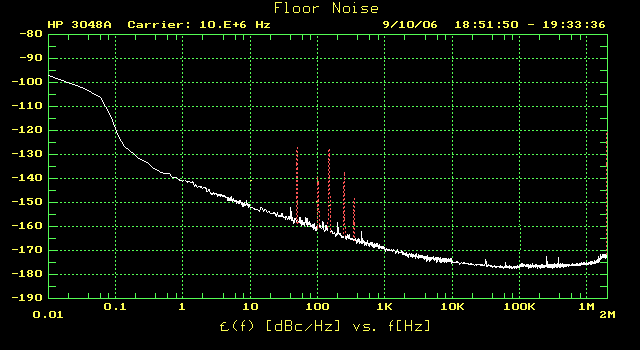Phase noise is the frequency domain representation of rapid, short-term, random fluctuations in the phase of a wave, caused by time domain instabilities or jitter. Generally speaking radio frequency engineers speak of the phase noise of an oscillator, whereas digital system engineers work with the jitter of a clock. However they are inter-related.
An ideal oscillator would generate a pure sine wave. In the frequency domain, this would be represented as a single pair of delta functions (positive and negative conjugates) at the oscillator's frequency, i.e., all the signal's power is at a single frequency. All real oscillators have phase modulated noise components. The phase noise components spread the power of a signal to adjacent frequencies, resulting in sidebands. Sidebands degrade the performance of a communication system. So low phase noise is vital in today's communication systems. Oscillator phase noise often includes low frequency flicker noise and may include white noise.
Consider the following noise free signal:
- v(t) = Acos(2πf0t).
Phase noise is added to this signal by adding a stochastic process represented by φ to the signal as follows:
- v(t) = Acos(2πf0t + φ(t)).
Phase noise is a type of cyclostationary noise and is closely related to jitter. A particularly important type of phase noise is that produced by oscillators.
Phase noise (L(f)) is typically expressed in units of dBc/Hz at various offsets from the carrier frequency. For example, a certain signal may have a phase noise of -80 dBc/Hz at an offset of 10 kHz and -95 dBc/Hz at an offset of 100 kHz. These are really phase noise density values. Phase noise can be measured and expressed as single sideband or double sideband values. Phase noise is sometimes also measured and expressed as a value integrated over a certain range of offset frequencies. For example, the phase noise may be -40 dBc integrated over the range of 1 kHz to 100 kHz. This Integrated phase noise (expressed in degrees) can be converted to jitter (expressed in seconds) using the following formula.

